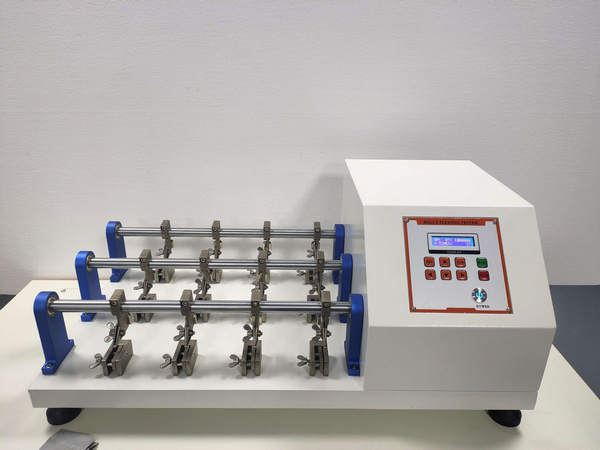Site: Home > Home > News and events
When choosing the right shoe bending tester, consider the following 10 tips:
1. Testing Standards: Determine the specific testing standards or requirements relevant to your industry or application. Ensure that the shoe bending tester you choose complies with these standards, such as ISO, ASTM, or EN.
2. Capacity: Consider the maximum load capacity of the testing machine. Ensure it can accommodate the range of shoe sizes and materials you intend to test, including both men's and women's shoes.
3. Bending Methods: Evaluate the available bending methods offered by the tester. Different methods, such as constant force or constant deflection, may be required depending on your testing needs. Choose a tester that supports the appropriate bending method.

4. Flexibility: Assess the tester's flexibility in terms of adjustable parameters such as angle, speed, and number of cycles. This flexibility allows you to replicate various real-life bending conditions and achieve accurate test results.
5. Gripping Mechanism: Look for a shoe bending tester with a secure and reliable gripping mechanism for holding the shoe in place during testing. The grip should be adjustable to accommodate different shoe sizes and designs.
6. Data Acquisition: Consider the data acquisition system offered by the tester. Look for features such as digital display, real-time data logging, and software compatibility to ensure accurate measurement and easy data analysis.
7. Safety Features: Prioritize safety features to protect operators and maintain the integrity of the testing process. Look for features like emergency stop buttons, overload protection, and safety shields.
8. Support and Training: Evaluate the level of support provided by the manufacturer. Check if they offer training programs, technical assistance, and reliable customer support to address any issues or concerns during the testing process.
9. Durability and Maintenance: Assess the build quality and durability of the shoe bending tester. Look for a machine made from high-quality materials that can withstand regular use and require minimal maintenance.
10. Budget: Consider your budget constraints while choosing a shoe bending tester. Compare different models, considering their features, capabilities, and price. Choose a machine that provides the best value for your investment.
By considering these tips, you can make an informed decision when selecting a shoe bending tester that is tailored to your specific testing requirements and meets industry standards.
Copyright 2022:Qinsun Instruments Co., Limited
High-end textile tester supplier Email:info@qinsun-lab.com | Textile Testing Equipment pdf | Tel:021-67800179 |